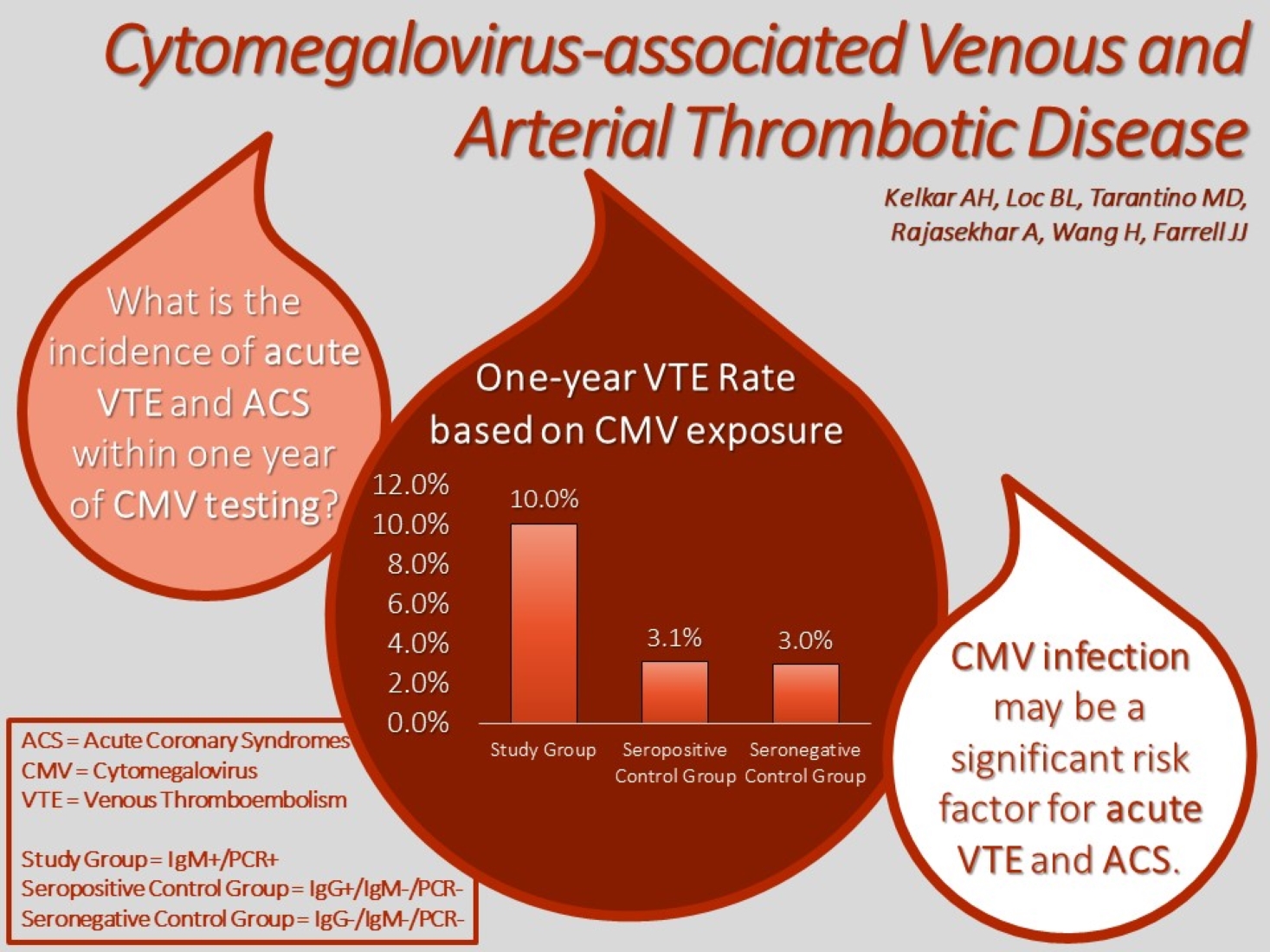Article
Version 2
This version is not peer-reviewed
Cytomegalovirus-Associated Venous and Arterial Thrombotic Disease
Version 1
: Received: 13 July 2020 / Approved: 14 July 2020 / Online: 14 July 2020 (03:48:03 CEST)
Version 2 : Received: 16 October 2020 / Approved: 16 October 2020 / Online: 16 October 2020 (12:09:23 CEST)
Version 2 : Received: 16 October 2020 / Approved: 16 October 2020 / Online: 16 October 2020 (12:09:23 CEST)
How to cite: Kelkar, A.; Loc, B.; Tarantino, M.; Rajasekhar, A.; Wang, H.; Kelkar, M.; Farrell, J. Cytomegalovirus-Associated Venous and Arterial Thrombotic Disease. Preprints 2020, 2020070287 Kelkar, A.; Loc, B.; Tarantino, M.; Rajasekhar, A.; Wang, H.; Kelkar, M.; Farrell, J. Cytomegalovirus-Associated Venous and Arterial Thrombotic Disease. Preprints 2020, 2020070287
Abstract
Background: Cytomegalovirus (CMV) infection has been associated with venous thromboembolism (VTE) and acute coronary syndromes (ACS). Methods: A retrospective study was conducted within the OSF HealthCare System in Peoria, Illinois. The objectives were to determine the incidence of acute VTE and ACS within one year of CMV testing. The “study group” included patients with positive CMV IgM or positive CMV Polymerase Chain Reaction (PCR). The “seropositive control” group included patients with positive CMV IgG and negative IgM. The “seronegative control” group included patients with negative CMV IgG and IgM, or negative PCR. Results: Within one year of CMV infection, 38 of 379 patients (10.0%) developed VTE in the study group compared to 41 of 1334 patients (3.1%) in the seropositive control and 37 of 1249 (3.0%) in the seronegative control. Adjusting for age and gender, both control groups were less likely to have VTE than the study group within one year (Seropositive Control: OR = 0.3, 95% CI 0.2-0.5, p <0.0001; Seronegative Control: OR = 0.4, 95% CI 0.2-0.6, p <0.0001). ACS was more likely to occur in the study group, with incidence of 7.7% compared to 4.7% (p <0.0001) in the seropositive control and 1.9% (p <0.0001) in the seronegative control. Adjusting for age and gender, the seronegative control was less likely to develop ACS than the study group within one year (OR = 0.4, 95% CI 0.2-0.7, p = 0.003). Conclusions: This retrospective study demonstrates that CMV infection may be a significant risk factor for VTE and ACS.
Keywords
Acquired Coagulation Disorders; Arterial thrombosis; prophylaxis; diagnosis; and treatment; Infections in immunocompromised hosts; Viral Infection; Venous thromboembolism; prophylaxis; diagnosis; treatment
Subject
Medicine and Pharmacology, Immunology and Allergy
Copyright: This is an open access article distributed under the Creative Commons Attribution License which permits unrestricted use, distribution, and reproduction in any medium, provided the original work is properly cited.
Comments (1)
We encourage comments and feedback from a broad range of readers. See criteria for comments and our Diversity statement.
Leave a public commentSend a private comment to the author(s)
* All users must log in before leaving a comment










Commenter: Amar Kelkar
Commenter's Conflict of Interests: Author